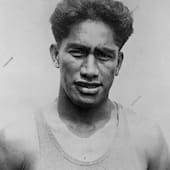The legend of Duke Kahanamoku, the father of modern surfing and double Olympic champion in Antwerp
At the Antwerp 1920 Games, Hawaiian champion Duke Kahanamoku became the first swimmer to win the Olympic 100m freestyle twice in a row. This came after his first title eight years earlier in Stockholm. He went on to claim a silver medal in the event at the 1924 Olympics in Paris, and is also known and honoured throughout the world as the man who popularised the sport of surfing.
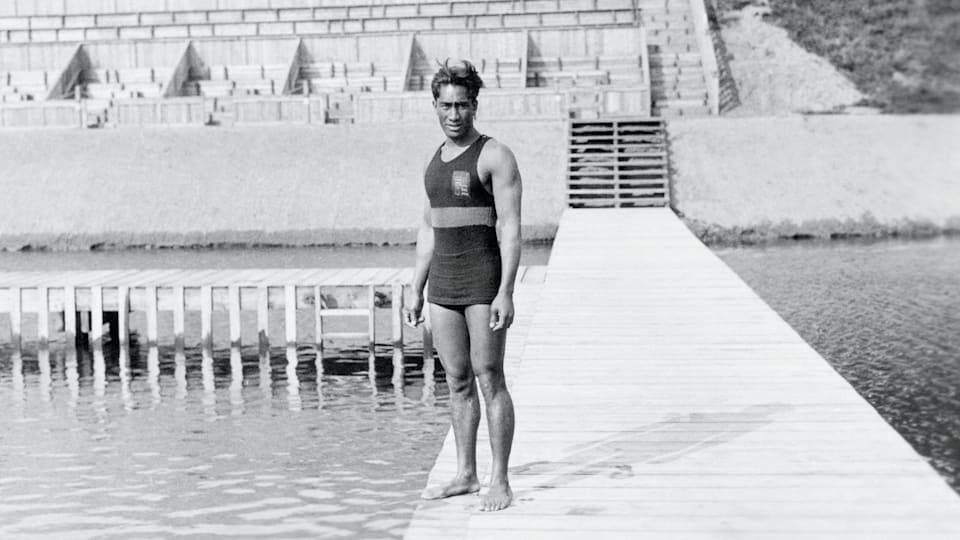
Duke Kahanamoku was about to celebrate his 30th birthday (he was born on 24 August 1890 in Honolulu, in what was then the Kingdom of Hawaii) when he set out to defend his 100m freestyle title in the "dark, cold and muddy" waters of the 100m-long Olympic pool that had been built for the Games of the VII Olympiad. Starting on 22 August 1920, the already legendary American swimmer won his races with ease, finishing in blistering times: 1:01.8 in his quarter-final heat, an Olympic record, and 1:01.4 in the semi-final, matching his own world record set in New York in 1918.
But he saved the best until last. He was joined in the final by three other American swimmers, two of whom (Pua Kealoha and Bill Harris) were also Hawaiian. He took the lead in his race for gold from the very first strokes and, after quickening his pace, won by a huge margin. He shattered his world record by one second and came close to getting under the minute barrier with a time of 1:00.4. The Hawaiian swimmers took all three medals: Kealoha took second place, with Harris coming third. But not for long.
The Australian competitor, William Herald, claimed that he had been obstructed during the race by the American Norman Ross. The judges disqualified Ross and nullified the result of the final, which was rescheduled five days later. After celebrating his 30th birthday, Kahanamoku returned to the water with all the other finalists, except for Ross. The 1912 Olympic gold medallist was again crowned champion and became the first swimmer to achieve a double victory in the 100m race. He took the title with a time of 1:01.4. This new race did not change the original results, as Kealoha came away with the silver and Harris with the bronze.
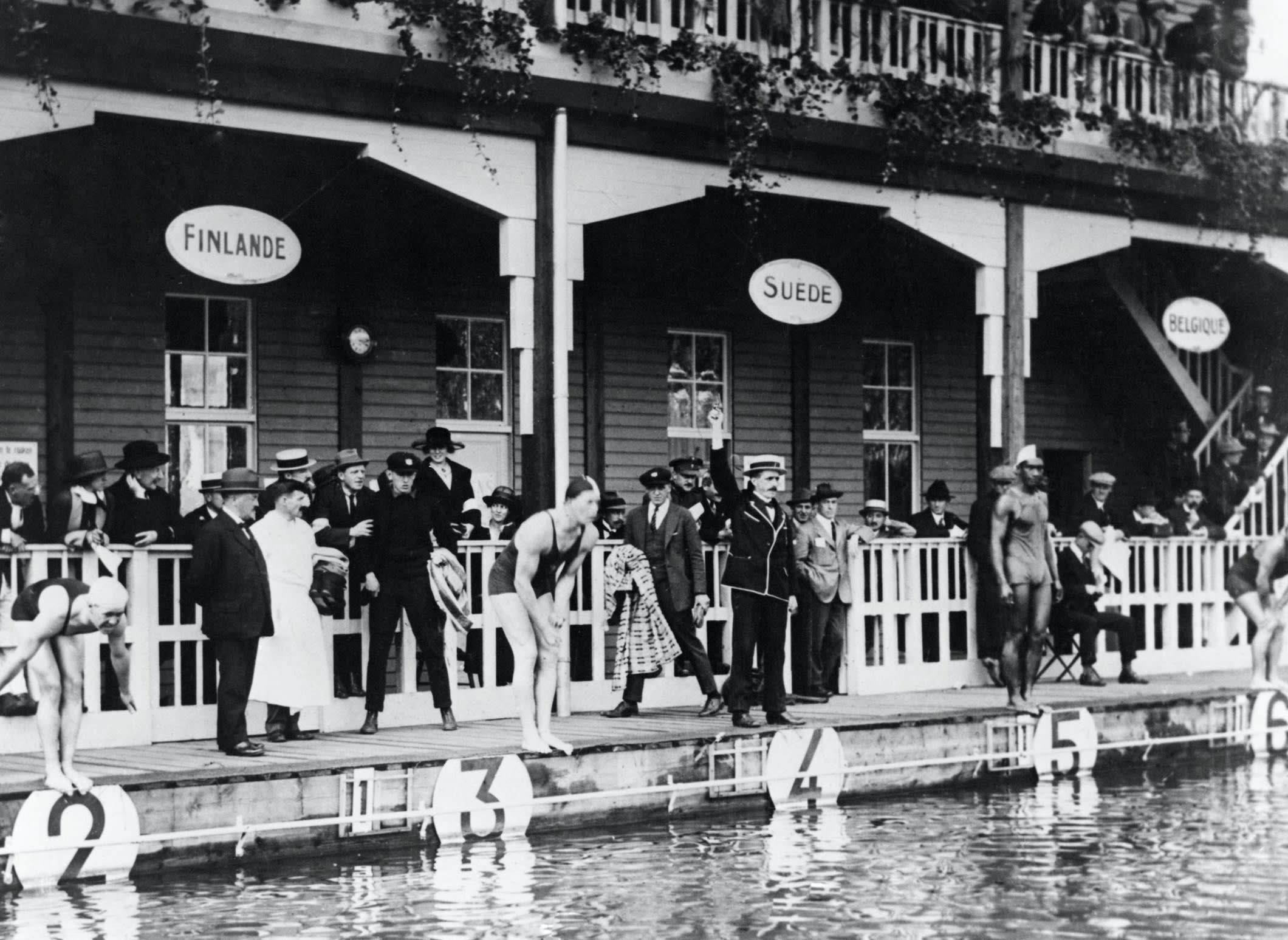
On 1 September, after being warmly congratulated by his team-mates as he left the pool and joking with the officials, the man nicknamed "the Duke" went to take a power nap behind the stands. But he still had one more race left to swim, the 4x200m relay. Just as the starting whistle was about to blow, he had to be woken up in a hurry to get to the edge of the pool in time. He and team-mates Perry McGillivray, Kealoha and Ross won by 21 seconds (in a world record time of 10:04.4), putting the Americans ahead of the Australians, who had beaten them four years earlier in Stockholm. Great Britain took the bronze medal 33 seconds behind.
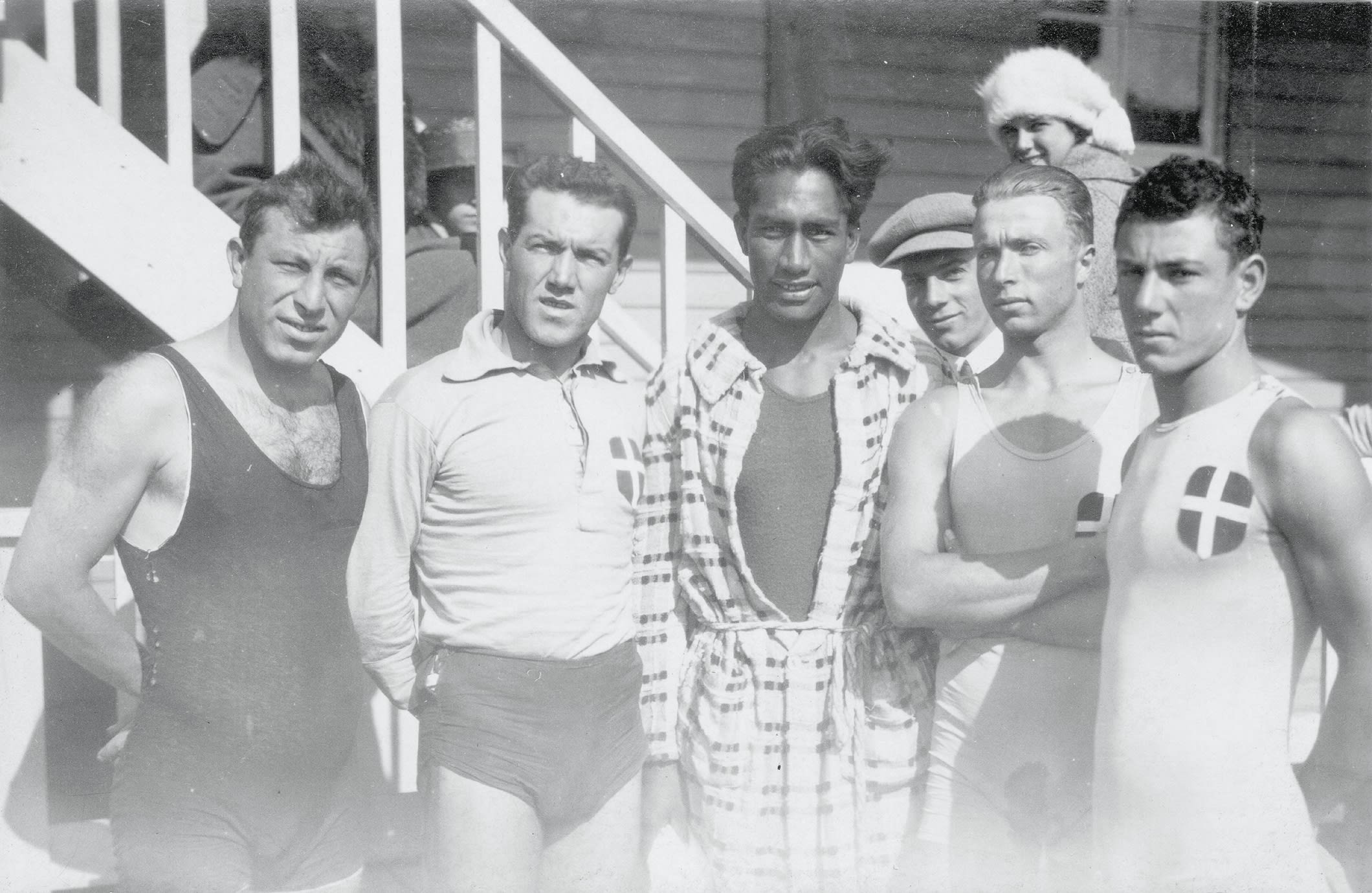
There is still a question being debated by historians. At Antwerp 1920, Kahanamoku was also said to have played for the United States water polo team. He allegedly replaced one of the team members in the last match, the bronze-medal match, in which the American team lost 5-0 to Sweden. At least that's what he said, but there is no conclusive proof that he was involved in the game.
Two passions: swimming and surfing, and a first title in 1912 in Stockholm
Queen Liliʻuokalani of Hawaii was overthrown in 1893, three years after Kahanamoku was born. A republic was proclaimed and, in 1898, the Pacific archipelago became a part of the United States. Kahanamoku grew up with two passions: surfing (well known on his island but little known elsewhere) and swimming. He excelled in the front crawl, a stroke that was invented in Australia and which he perfected.
At just 21 years old, he began to make a name for himself at national level. He swam the 100 yards (91m) freestyle race in 55.4 seconds in Honolulu Harbour on 11 August 1911, breaking the record by 4.6 seconds. He swam the 50 yards (46m) in 24.2 seconds. But a few thousand kilometres away, his records were not recognised by the Amateur Athletic Union (AAU), which questioned the conditions under which they were set.
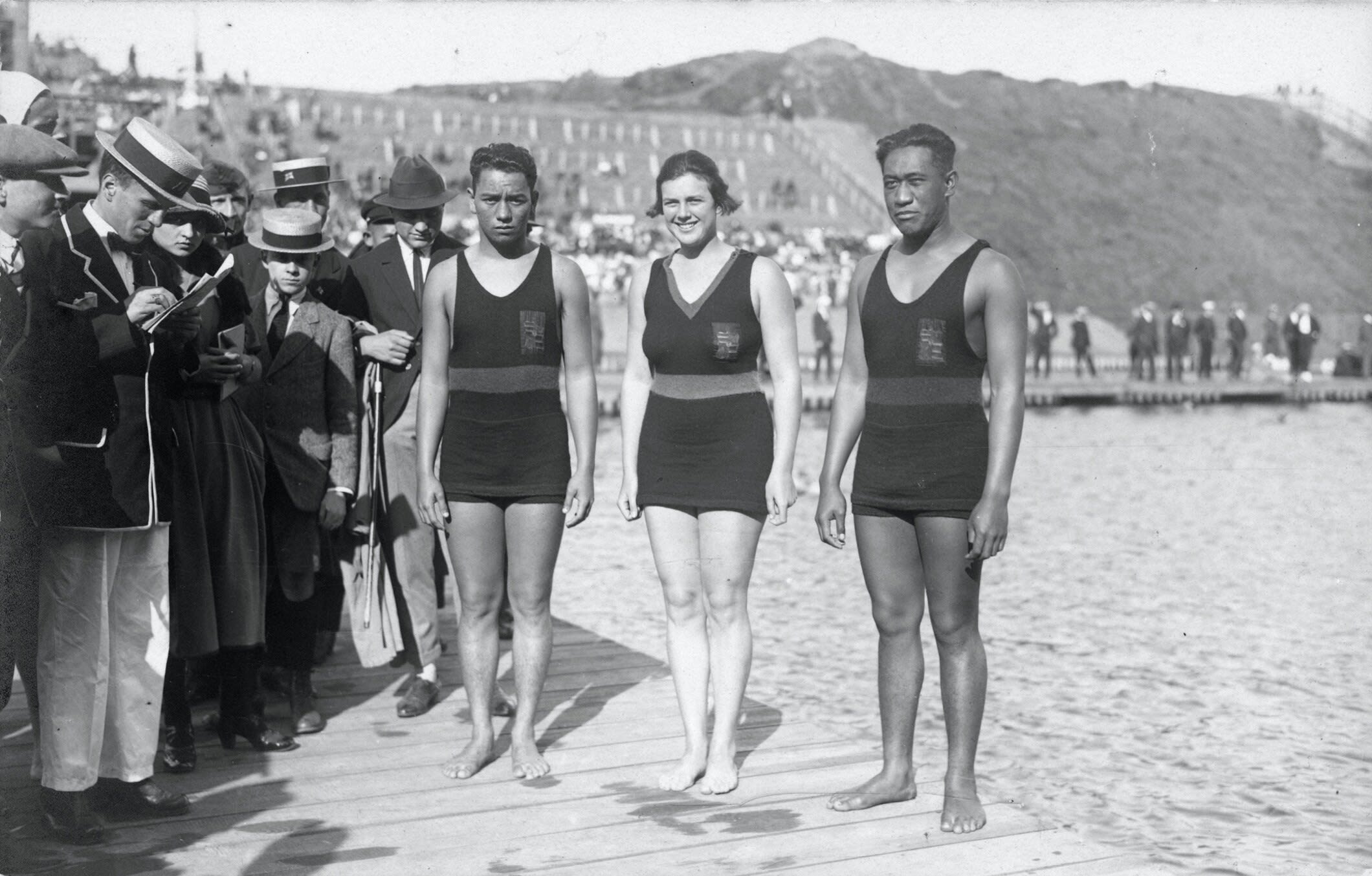
Duke crossed the Pacific, and won many races on the east coast of the USA, establishing himself as the best sprinter in the country. He qualified for the Stockholm 1912 Games with ease. The American team crossed the Atlantic aboard the SS Finland. The swimming events were held in a stretch of the Baltic Sea, with the race pool located in Djurgårdsbrunnsviken bay in the centre of the Swedish capital.
The 100m made its third appearance at the Games on 6 July, starting with 34 swimmers in the heats. Kahanamoku won his heat in 1:02.6, an Olympic record. He also won his quarter-final, in 1:03.8, on 7 July. Then came the confusion. The American swimmers left to get some rest aboard the SS Finland, expecting the semi-finals to take place the next day. They had been misinformed, however, and the semi-finals actually took place on the same day. They were not warned and the two races took place without them. At first, they were disqualified. But, thanks in particular to Australian swimmer Cecil Healy, they were finally given a second chance. A new heat was arranged and Duke won it with a new world record (1:02.4).
The final took place on 10 July and Kahanamoku – just as he would be eight years later – was found asleep behind the stands at the start of the race, woken up in a hurry, and brought to the starting line just in time. He dominated the race from start to finish, winning with a time of 1:03.4 and a two-metre lead over Healy, who, with a strong finish, overtook team-mate Ken Huszagh for the silver medal. Kahanamoku was presented with his medal and congratulated by King Gustav V of Sweden. The Americans won the silver medal in the 4x200m, with Australia taking the gold.
The father of modern surfing
Having become a world-class swimming star, "the Duke" not only gave swimming exhibitions all over the world, but also introduced surfing to the masses. He introduced the sport to the east and west coasts of the United States and, in December 1914, he brought surfing to Freshwater Beach near Sydney, where there is now a statue of him, highlighting his status as the father of surfing in Australia. There is another statue of the legendary surfer at Huntington Beach in south Los Angeles. And let's not forget the one in Waikiki Bay in Honolulu, permanently adorned with flowers, or the monument that honours him in Christchurch, New Zealand. "The Duke" will always be remembered as the champion who introduced the world to surfing at the beginning of the 20th century.
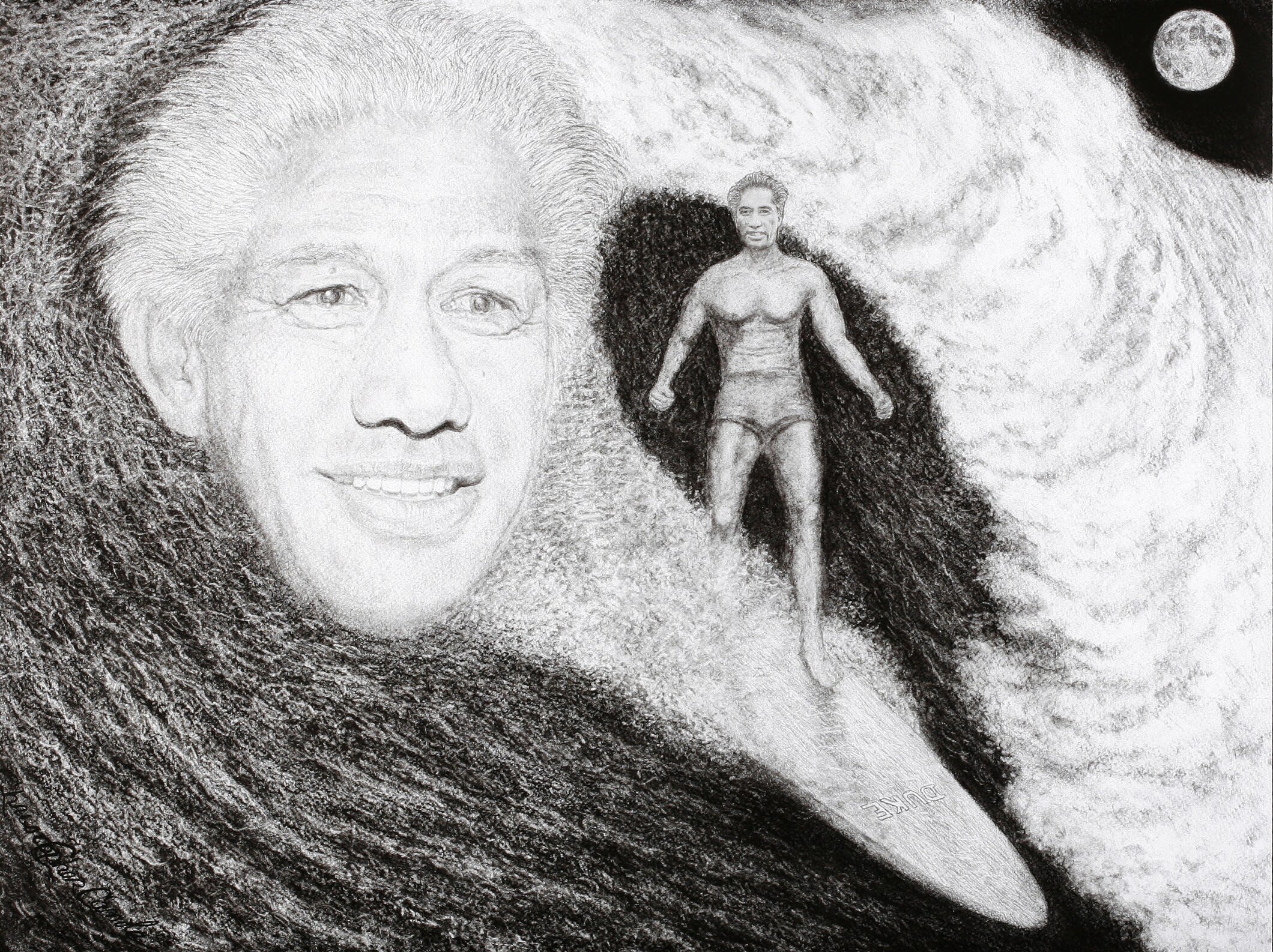
He continued his competitive swimming career and won the AAU Championships in 1916, 1917 and 1920. Then came his second victory at the Antwerp Games, which reinforced his iconic reputation. While continuing to popularise and promote surfing, he also competed in his third Games in Paris in 1924. There, in the 100m race at the Tourelles pool, Johnny Weissmuller, who would later go on to play Tarzan, deprived him of a third 100m title after taking the lead and finishing in under a minute (59.0 seconds). Silver medallist Duke shared the podium with his brother, Samuel, who took third place.
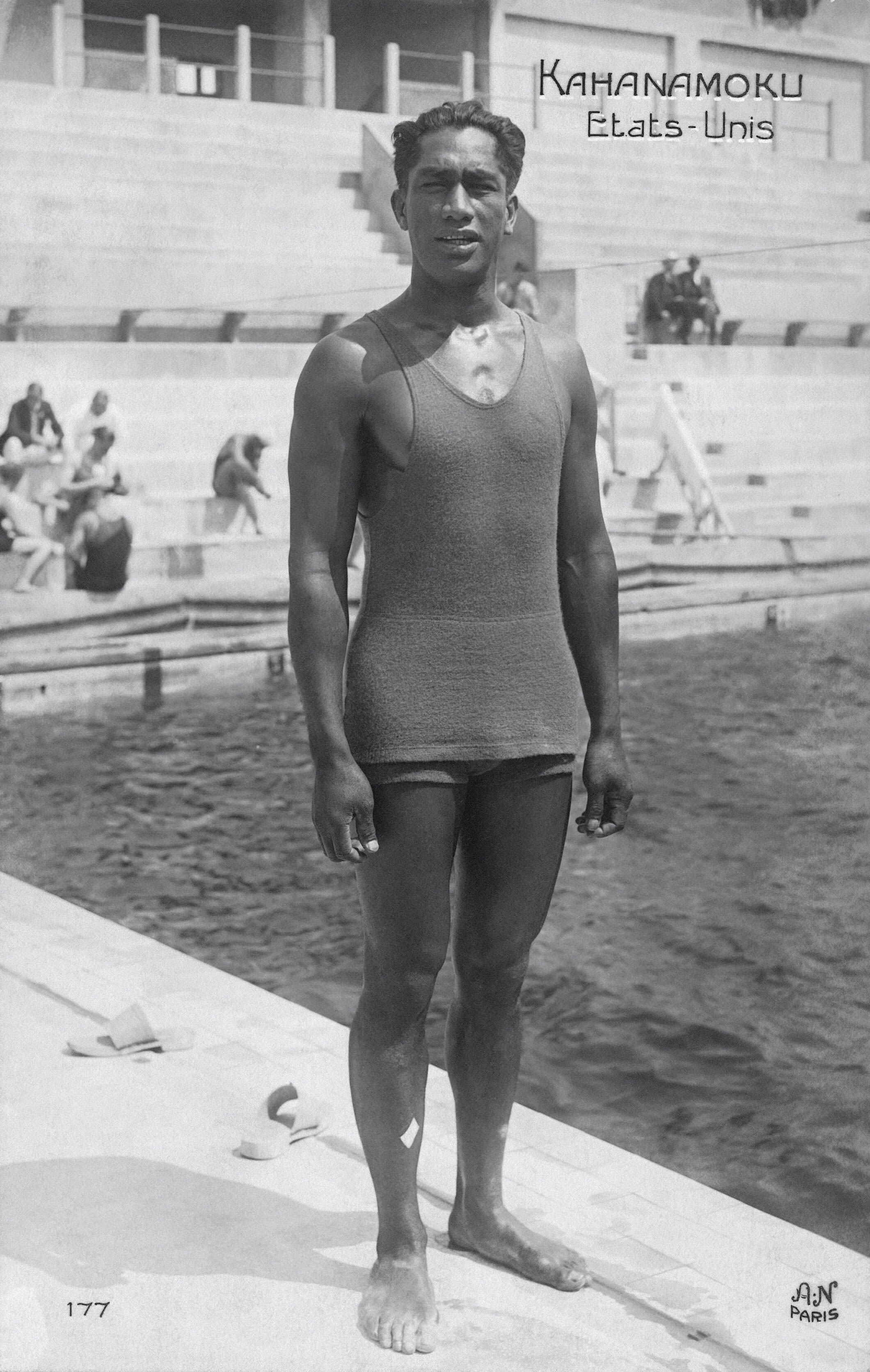
The five-time Olympic medallist moved to California and starred in a few Hollywood movies. He also worked as a lifeguard at Newport Beach. On 14 June 1925, he rescued eight fishermen from a sinking boat on his surfboard, going back and forth between the shore and the capsized vessel. At the age of 42, he was a substitute for the US water polo team competing at the Los Angeles 1932 Games. He then became the Sheriff of Honolulu, a position he held until 1961. Kahanamoku died of a heart attack at the age of 77 on 22 January 1968. The people of Honolulu followed him to the ocean, where his ashes were scattered.

